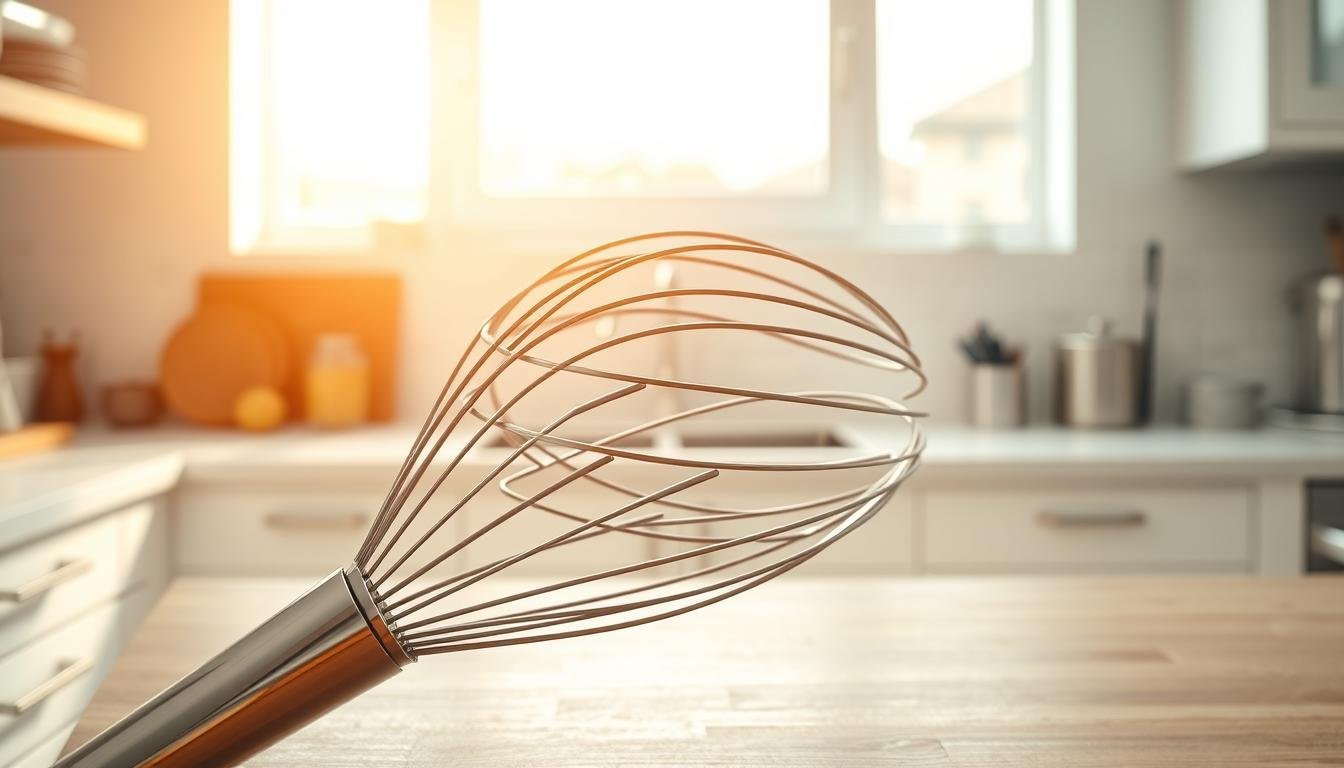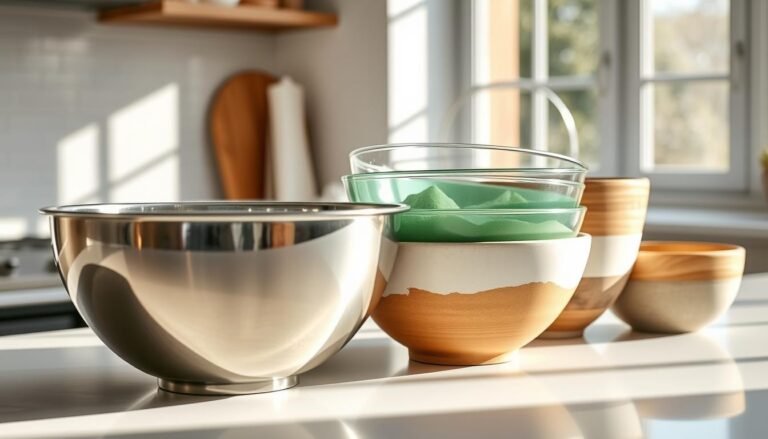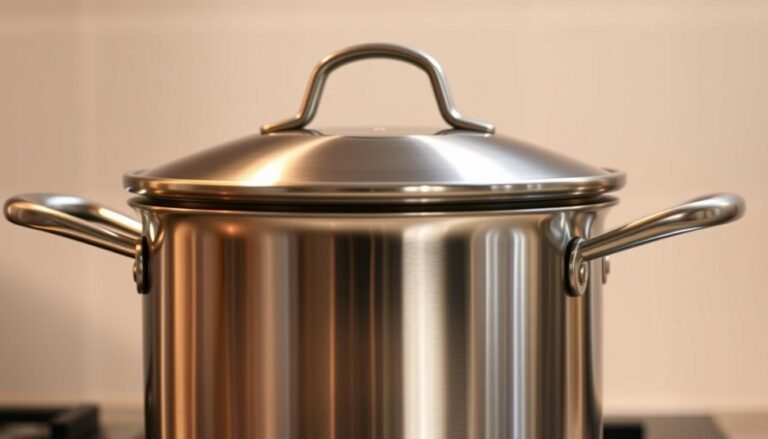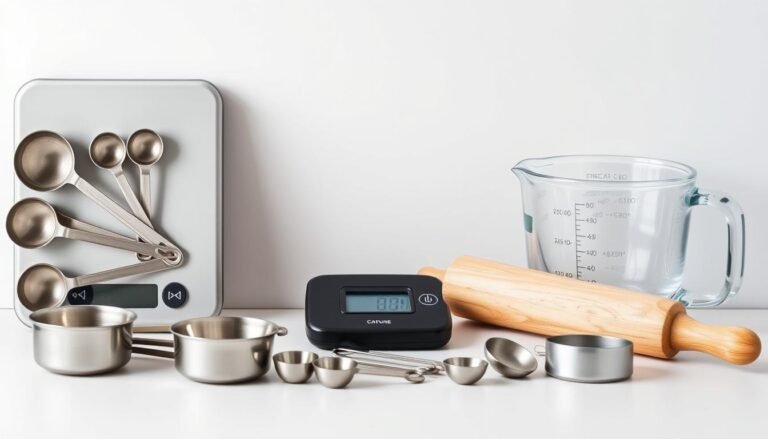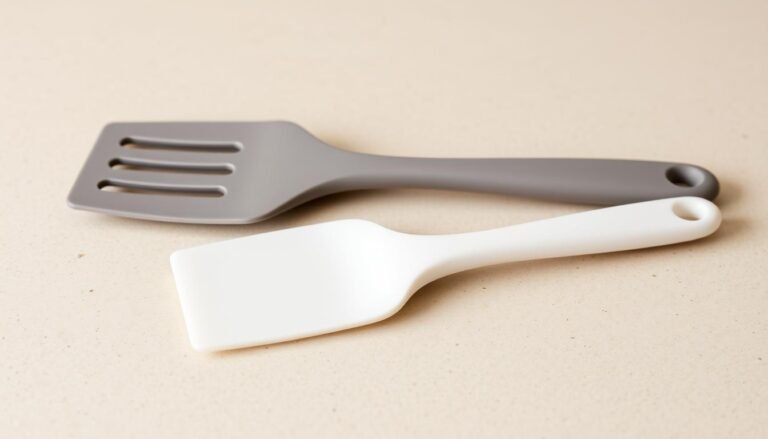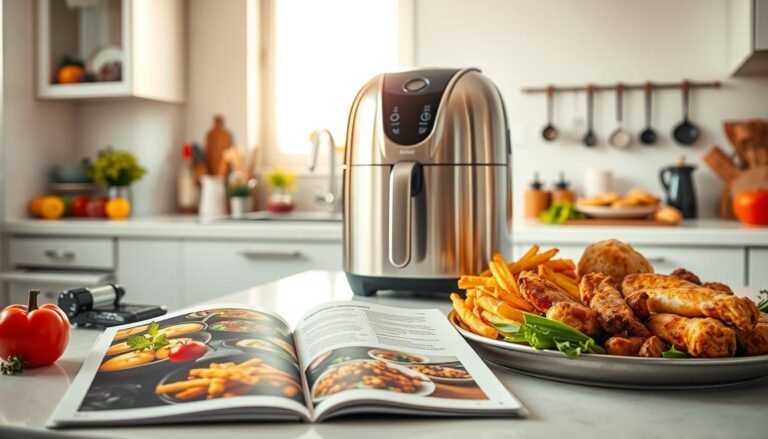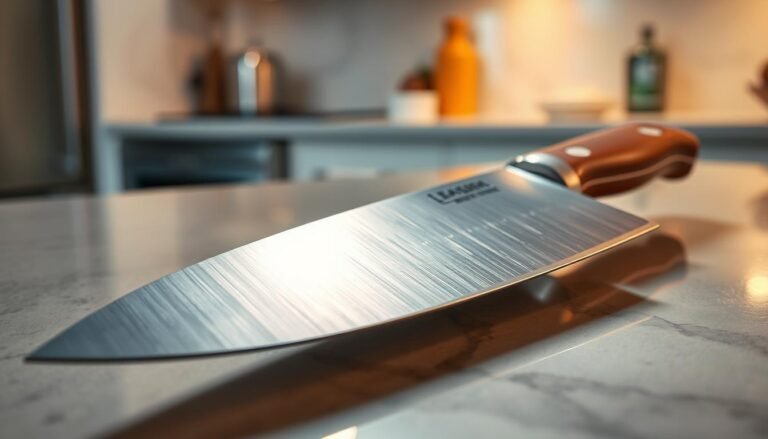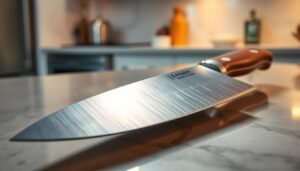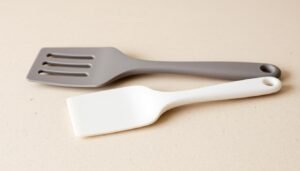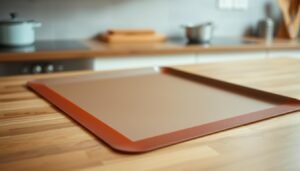Disclosure: This Post Contains Affiliate Links; We earn a commission on purchases.
In the world of cooking, some tools really stand out. The kitchen whisk is one of them. Chefs and home cooks love their cooking tools, and the whisk is often a top pick.
A whisk is more than just a simple tool. It’s a key to unlocking many cooking techniques. It’s used for mixing sauces and beating eggs, making it essential in the kitchen. Its use is widespread, making it a secret weapon for many.
Key Takeaways
- The kitchen whisk is a fundamental tool in every kitchen.
- It is used for a variety of cooking tasks, from mixing to beating ingredients.
- Its versatility makes it a favorite among chefs and home cooks.
- The whisk is essential for achieving the right consistency in sauces and mixtures.
- It is a simple yet effective tool that deserves its place as a secret weapon in cooking.
The Unexpected Power of a Simple Kitchen Tool
A whisk is more than a simple tool. It’s a key to unlocking culinary secrets. At the heart of many recipes is the wire whisk. It’s a kitchen staple for cooks for centuries.
Why Whisks Outperform Other Utensils
Whisks outperform other kitchen tools because of their design and function. The wire whisk is great at mixing, aerating, and emulsifying. It’s a must-have for many cooking tasks. Here’s why whisks are better:
- Versatility in handling different ingredients and mixtures
- Efficiency in mixing and aerating with minimal effort
- Ability to emulsify sauces and dressings effectively
These benefits make the whisk a top choice over other tools like spoons or spatulas for many tasks.
The Physics Behind Whisking Magic
The whisk’s effectiveness comes from the physics of its motion and structure. When you whisk, you mix ingredients well and add air. This breaks down particles and ensures even distribution.
The wire whisk is great at getting through thick batters and sauces. It’s a valuable tool in any kitchen.
The Versatile Whisk: Types and Their Specialized Uses
The whisk is a key tool in every kitchen. It comes in many shapes and sizes for different tasks. Knowing the types of whisks can improve your cooking and baking.
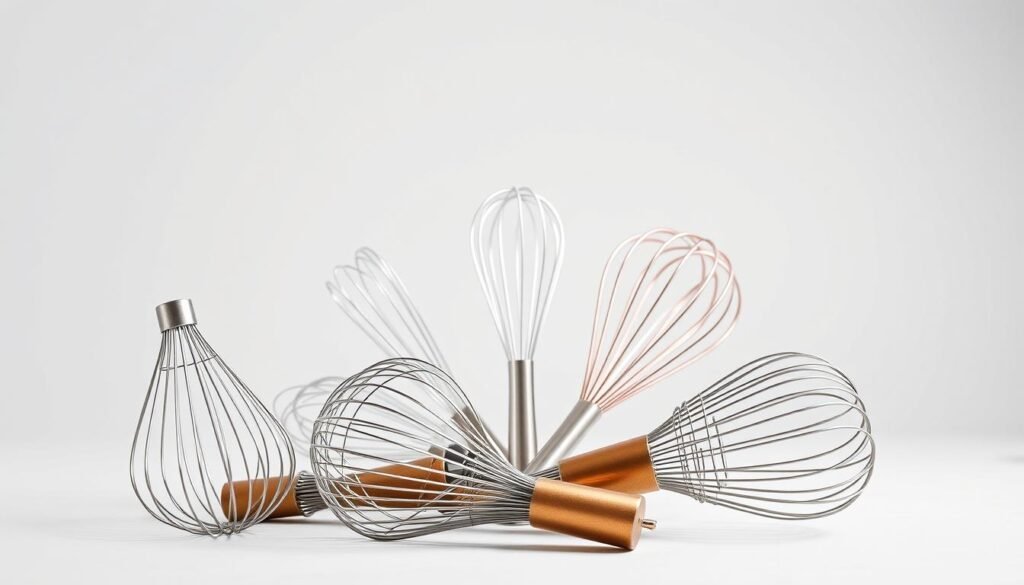
Balloon Whisks: The Everyday Essential
Balloon whisks are great for mixing. They’re good for whipping cream, beating eggs, and mixing sauces. Their wires blend ingredients well.
For a good hand whisk, look for one made of strong materials like stainless steel.
French Whisks: Mastering Sauces and Custards
French whisks are slim and good for liquids in deep pans. They mix sauces and custards well. Their shape helps scrape the pan’s bottom.
Flat Whisks: The Pan Deglazing Expert
Flat whisks are for deglazing pans and mixing thick batters. Their flat shape scrapes the pan well. They’re great for gravies and pan sauces.
Specialty Whisks: Ball, Coil, and Cage Designs
There are special whisks for specific tasks. Ball whisks are for deep containers, coil whisks for thick mixtures, and cage whisks for frothing milk. These whisks show the variety of designs and their uses.
In conclusion, there’s a whisk for every task in the kitchen. From balloon whisks to special designs, each whisk has its own benefits. Whether you like a hand whisk or an electric whisk, the right one can change your cooking.
Kitchen Transformations Only a Whisk Can Achieve
A kitchen whisk is more than a simple tool. It’s a key player in many dishes. It helps make emulsions and aerated mixtures.
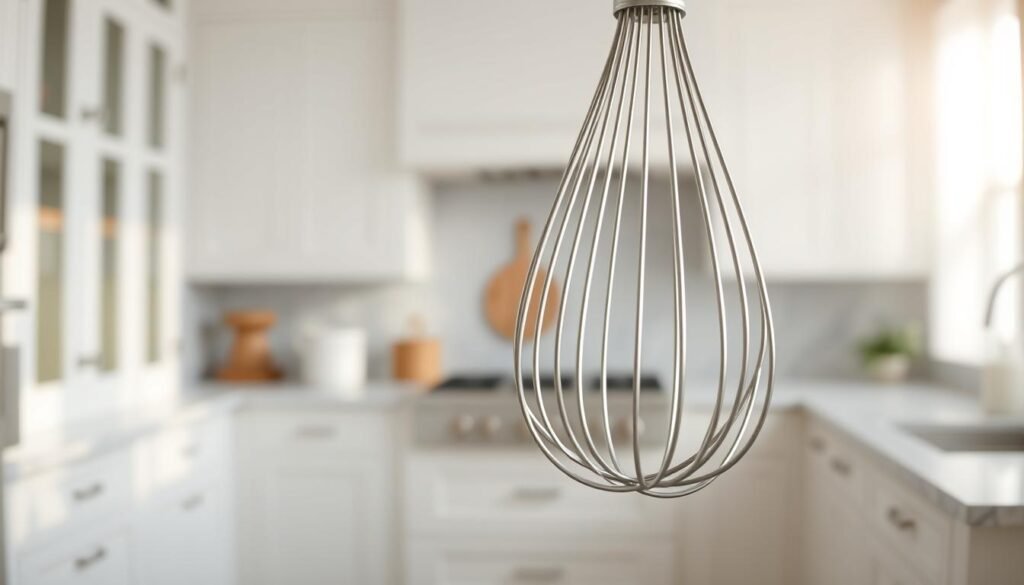
Creating Perfect Emulsions: Dressings and Sauces
A whisk is great at making stable emulsions. It mixes oil and water-based ingredients well. This makes dressings and sauces smooth and consistent.
The Art of Aeration: Batters, Eggs, and Cream
A whisk also adds air to batters, eggs, and cream. This makes them light and fluffy. In baking, it’s key for a light cake.
Eliminating Lumps: Smooth Gravies and Batters
Lumps are a problem in cooking, but a whisk fixes them. Whisking gravies and batters makes them smooth. This is important for sauces and gravies.
Whipping to Perfection: Meringues and Whipped Cream
Whisking ingredients is another whisk skill. It makes meringues and whipped cream light and fluffy. This is vital for desserts.
In short, a baking essential like a whisk is a must-have. It’s great for emulsions, aeration, lump removal, and whipping. It’s essential for kitchen magic.
Hand Whisks vs. Electric Whisks: Choosing Your Weapon
Choosing between a hand whisk and an electric whisk depends on what you’re doing and what you like. It’s about the task and your own taste.
Many cooks love whisking by hand. It’s not just about getting the mix right. It’s also about feeling close to the food.
The Tactile Advantage of Hand Whisking
A hand whisk lets you control and connect with your ingredients in a special way. It’s great for small amounts and when you need to be precise.
For example, making vinaigrette is easier with a hand whisk. It helps mix ingredients gently, so they blend well without getting too mixed up.
When to Leverage Electric Whisk Power
Electric whisks are perfect for big jobs like whipping cream or beating eggs for meringues. They make hard tasks easier and faster.
They save you time and effort, which is why they’re great for big cooking and baking jobs. Looking at reviews on Good Housekeeping can help you choose the right one.
Whisk Attachments for Stand Mixers
If you have a stand mixer, a whisk attachment is a smart choice. It does what an electric whisk does but is easy to store and use with other mixer functions.
It’s perfect for mixing butter and sugar or beating eggs. It’s a strong and efficient way to get your ingredients ready.
Selecting and Maintaining Your Perfect Whisk
Choosing the right wire whisk can make cooking better. There are many whisks out there. Knowing what makes each one special is key.
Material Matters: Stainless Steel, Silicone, and More
The material of your kitchen utensil affects how well it works and lasts. Here are some common whisk materials:
- Stainless steel: Durable and resistant to corrosion
- Silicone: Heat-resistant and gentle on non-stick surfaces
- Copper: Excellent heat conductivity, ideal for sauces and custards
- Balloon wire: Lightweight and versatile, suitable for most tasks
Each material has its own benefits. Your choice should match your cooking needs.
Size and Shape: Matching the Whisk to the Task
The size and shape of your cooking tool are very important. Think about this:
- Deep bowls need longer, stronger whisks
- Shallow pans require flat, wide whisks for effective deglazing
- Small bowls and cups need smaller, more precise whisks
Choosing the right whisk for the job makes mixing, beating, and blending better.
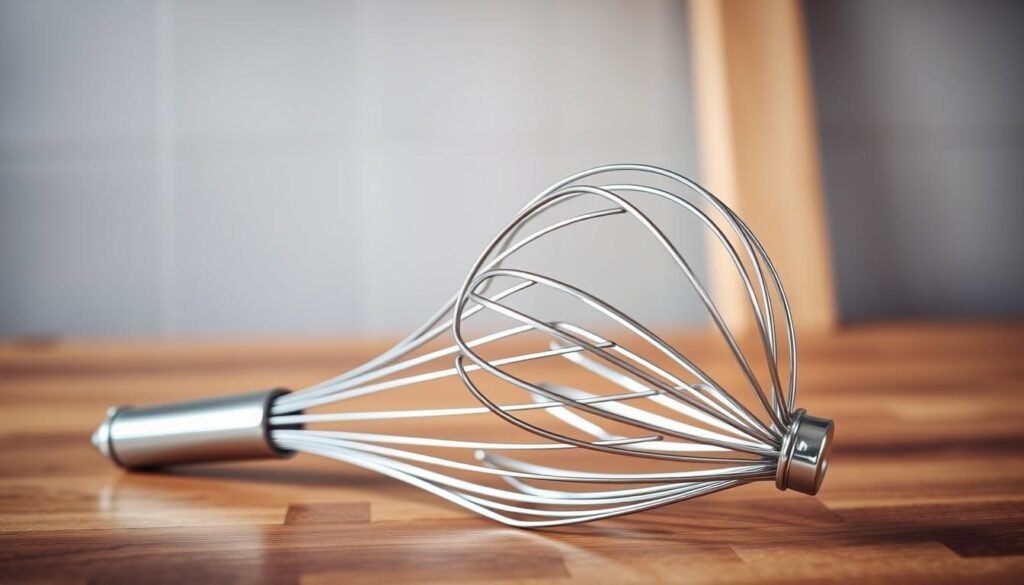
Cleaning and Storage for Longevity
Proper care is key to making your whisk last longer. Here are some tips:
- Clean your whisk right after use to stop food residue from sticking
- Use mild soap and warm water for most materials
- Dry it well to stop rust or corrosion
- Keep your whisk in a dry spot, away from other utensils that might damage it
By following these tips, your kitchen utensil will last a long time.
Conclusion: The Humble Whisk – An Irreplaceable Kitchen Essential
A whisk is more than a simple tool. It’s a baking essential that should always be in your kitchen. It’s great for many tasks, like making sauces, dressings, whipping cream, and eggs.
There are many types of whisks, like balloon, French, and flat whisks. Each one is good for different cooking tasks. Whether you use a hand whisk or an electric one, the right tool makes cooking better.
Knowing how whisking works and picking the right whisk for your kitchen is key. Keeping your whisk clean and stored right makes it last longer. This way, it stays a trusted friend in your kitchen.
Using a good kitchen whisk can make your dishes better and cooking easier. Whisks are a must-have in many professional kitchens. If you love cooking, getting a high-quality whisk is a smart choice.
FAQ
What is the best type of whisk for general mixing tasks?
How do I choose the right material for my whisk?
Can I use a hand whisk for whipping heavy cream or eggs?
What are the benefits of using a flat whisk for deglazing pans?
How do I properly clean and maintain my whisk?
Are electric whisks worth the investment for home cooks?
Can a whisk attachment for a stand mixer replace a hand whisk?
What are some specialty whisks and their uses?

Ryan Conlon is the creator of QuickSimpleAirFryer.com, where he shares easy tips, tricks, and ideas for getting the most out of your air fryer. Focused on speed, flavor, and simplicity, Ryan helps home cooks make crispy, satisfying meals without the mess or hassle of traditional cooking. Whether you’re new to air frying or looking for fresh inspiration, Ryan’s practical advice makes it simple to enjoy quick, delicious results every time.
Subscribe to Our Newsletter

